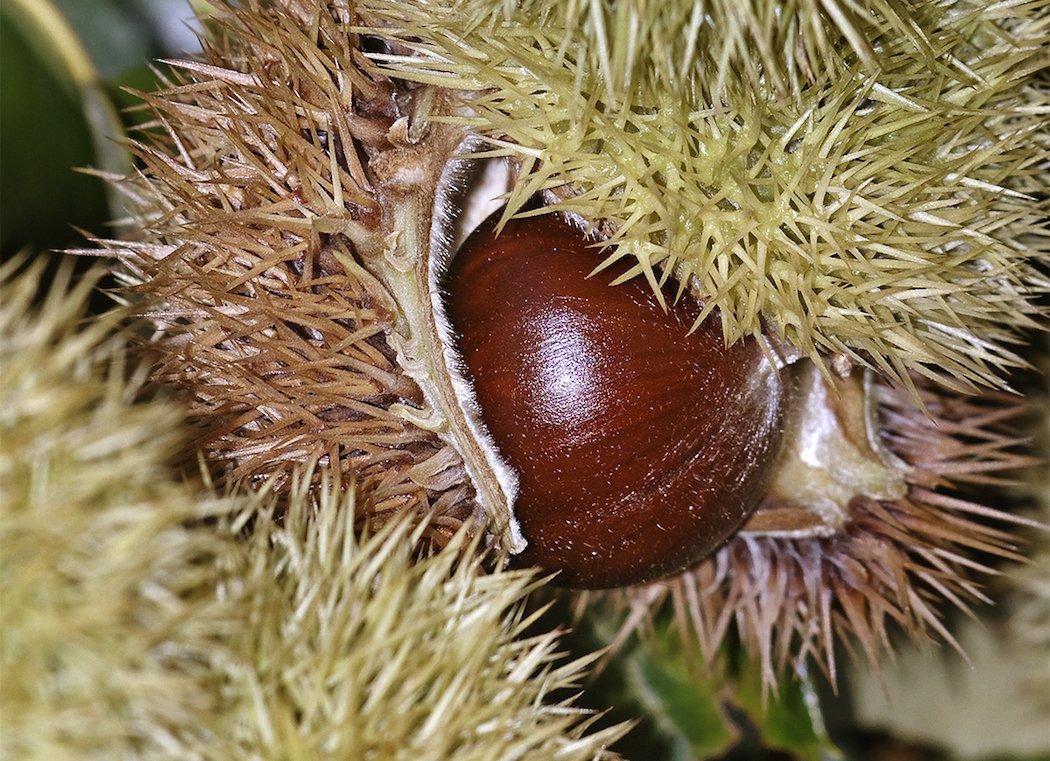Have You Seen Any Chestnut Trees Near You?
If you were suddenly cast back in time to the Appalachian mountain range at the turn of the 20th Century, you would find it almost unrecognizable compared to today. In the absence of regulated hunting and the presence of market gunning and poaching, many wildlife species like deer and turkey were teetering on the brink of extinction. Flights of passenger pigeons still blackened the skies, but wouldn't for much longer. And rather than a mosaic of miscellaneous hardwoods, you could walk for miles under a canopy of mostly towering chestnut trees.
From Maine to Mississippi, branching east and west off the trunk of the Appalachians, American chestnuts were the most abundant hardwood tree in the eastern United States, making up an estimated 25 to 30 percent of the eastern hardwood forest. Naturally, they were also one of the most important sources of hard mast for a host of wildlife species.
Their importance was due not just to their abundance but their overall superiority to oaks. Chestnuts contain approximately 40 percent carbohydrates, compared to only about 10 percent for white oak acorns. They consist of 10 percent protein compared to only four percent for white oak acorns. Meanwhile they're only two percent fat compared to 10 percent for acorns.

In 1904, Asian or Asiatic chestnut trees were imported into the New York Zoological Garden as nursery stock. Along with them came a chestnut blight, caused by an Asian bark fungus. The alien trees were resistant but domestic ones were not. In just two years nearly all of New York's trees were infected. The blight then spread from there like a raging wildfire across an estimated 50 miles of forest a year. Over the next 30 years it spread from Maine to Georgia engulfing over 30 million acres of chestnut forest in what many consider the greatest ecological disaster in history. By the Great Depression, American chestnuts were all but wiped out. Gone.
Though American chestnuts have been all but eliminated as a measurable component of eastern forests, they still exist in some form. In the early 1950s, James Carpenter, a member of the Northern Nut Growers Association, discovered a large American chestnut tree growing in Ohio. Impressed with its blight resistance, he sent a sample to fellow NNGA member and well-known plant breeder Dr. Robert Dunstan, who grafted it onto chestnut root stock, which he then cross-pollinated with a mixture of three USDA-released Chinese chestnut varieties. The end result was the Dunstan chestnut, a hybrid known for both blight resistance and the production of large, high-quality nuts.
Don't Miss: 10 Trees That Will Hold Deer on Your Hunting Property
Numerous other hybrid varieties have since been produced and increasingly, commercial nurseries and conservation organizations like the National Wild Turkey Federation are making them available to hunters and land managers interested in improving the wildlife habitat on their land. Chestnuts are a great option as they represent a faster track to a more nutritious and reliable source of hard mast; and they grow well in a range of habitats and soil conditions.
Realtree Outfitters Montgomery and Montgomery Jr. Realtree Xtra Camo Shoe
Meanwhile, two groups have sprouted up with some loftier goals. Since the 1980s, the American Chestnut Cooperators' Foundation has been cross-breeding pure American chestnuts in an effort build up blight resistance, while also looking at forest ecology to determine if any specific forest habitat types foster chestnut growth. Alternately, the American Chestnut Foundation has been back-crossing naturally resistant Asian chestnuts with American chestnuts in hopes of developing a blight-resistant hybrid while still preserving as much of the genetic heritage of the American species as possible.
Their biggest obstacle is time, as they must wait for each new generation to mature before they can evaluate results. Meanwhile, the Virginia Department of Forestry has been working with both groups, back-crossing pure American chestnuts to hybrid American chestnut trees. According to researcher Wayne Bowman, they now have 15/16th American chestnut seedlings, but may not know for a decade how blight-resistant they are.
Don't Miss: The Ultimate Deer Hunting Property
Are you a deer hunter thirsty for knowledge? Check out our stories, videos and hard-hitting how-to's on deer hunting.








